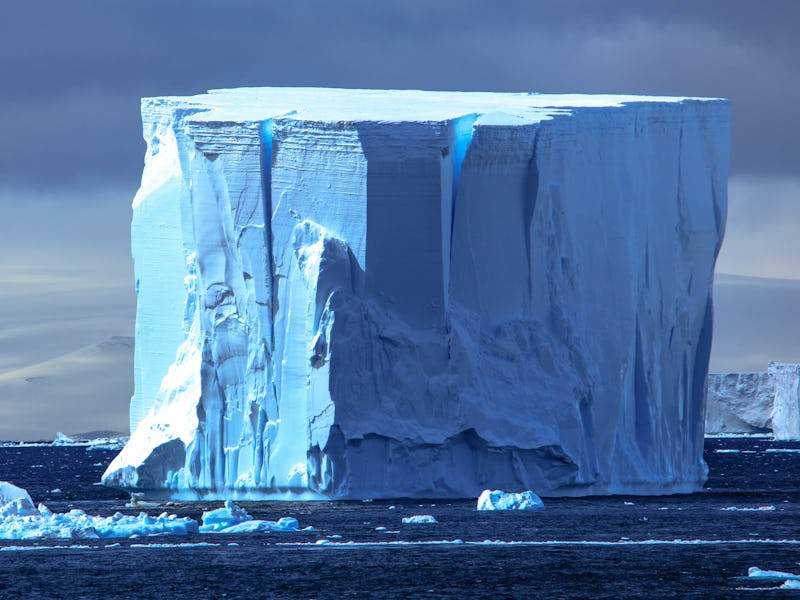NASA Maps Show How Quickly Antarctica Iceberg 2x Size of NYC Could Calve
The ominous "Halloween crack" grows every day.

The “Halloween crack” that forced researchers off an Antarctic ice shelf in October 2016 has grown ominously long. As NASA reported last week, the crack in Antarctica’s Brunt Ice Shelf, together with an even bigger one called “Chasm-1,” now threatens to break off an iceberg twice the size of New York City, which would spell very bad news for the scientists who live and work on the ice shelf.
NASA posted an image of the growing Halloween crack and Chasm-1, snapped by Landsat satellite 8 on January 23, alongside a photo of the same region in January 1986. At the rate they are growing, the cracks are “poised to release” an area of ice some 660 square miles large.
“It is not yet clear how the remaining ice shelf will respond following the break, posing an uncertain future for scientific infrastructure and a human presence on the shelf that was first established in 1955,” NASA writes.
The UK's Halley Research Station is located on Antartica's Brunt Ice Shelf.
Here’s how the region looked in 1986. Only 33 years ago, there weren’t any cracks.
The Brunt Ice Shelf in January 1986.
And below is the shelf in January 2019, with two prominent cracks. The “Halloween crack” (above the McDonald Ice Rumples label) has been growing eastward since 2016. NASA’s more concerned about Chasm-1, the crack in the middle of the image, which has been growing northward as fast as roughly 2.5 miles per year (4 kilometers per year). That chasm was dormant for at least 35 years, according to the British Antarctic Survey, but it started showing signs of movement in 2012.
NASA says it’s “not yet clear” what will happen to the rest of the ice shelf when the iceberg eventually breaks off, but it can’t be good news for the researchers at Halley VIa Research Station, the successor of stations Halley I through VI. The Halley station has already had to be rebuilt and relocated because of snow and ice conditions 10 times since the first one was erected in 1956. Now, with the growing Halloween crack some 10 miles (17 km) to its north, they may have to prepare to move again.
Halley Research Station has had to be rebuilt over the years in various locations because of shelf instability.
What will determine the fate of Halley VIa, researchers say, is where the Halloween crack and Chasm-1 eventually merge. “If they merge upstream (south) of the McDonald Ice Rumples, then it’s possible that the ice shelf will be destabilized,” said NASA Goddard Space Flight Center glaciologist Joe MacGregor, Ph.D..
Interestingly, NASA’s report on the imminent calving doesn’t mention climate change in relation to the event, noting only that calving is a normal occurrence in the ice shelves, but “the recent changes are unfamiliar in this area.” The British Antarctic Survey, for its part, notes that Antarctica is a “climate sensitive zone.”
To the west of Halley VIa is Pine Island Glacier, the region that contributes the most to the continent’s ice loss. That glacier, tweeted NASA Ice in 2018, “is one of the fastest-melting glaciers in Antarctica, contributing significantly to sea level rise.”